
http://www.gabriolaisland.org/GICC/home.htm
Gabriola Island is located in the Strait of Georgia, between Vancouver Island and the mainland of British Columbia, approximately 3 miles (5 km) east of Nanaimo on Vancouver Island. Gabriola is easily reached by a 20-minute ferry ride from downtown Nanaimo, or by floatplane from Vancouver (24 km).
Click on maps to manoeuvre around:
But first, you need to take a ferry from the mainland coast (we live closer to Tsawwassen terminal), to Nanaimo on Vancouver Island.
Hubby had a service call on Gabriola Island today, which meant he was up at 5am to catch the 7am ferry to Nanaimo to then enable him to catch the 10:35am ferry to Gabriola. He called at noon to say the customer had just arrived home and hopefully won't have to stay long because he has to do the whole ferry routine in reverse to get home. And he took Brandon with him.
The B.C. Ferry fleet is made up of all kinds of ships. There are now 36 of them, representing a wide range of sizes and classes. At the grandest end of the spectrum are the S-Class twins, Spirit of British Columbia and Spirit of Vancouver Island. Measuring 560 feet long (picture two football fields back-to-back), these vessels can accommodate up to 2,100 people and 470 vehicles. Compare those figures with the 111-foot Nimpkish, which carries 133 people and 16 vehicles, and you get some idea of the diversity of the fleet.
Over the next 15 years, approximately $2 billion will be required to upgrade and modernize the aging ferry fleet and ensure that terminals keep pace with traffic demands.
News release Oct 26/07
FIRST NEW SUPER C-CLASS VESSEL SETS SAIL FOR B.C. TOMORROW
VICTORIA – BC Ferries’ Coastal Renaissance, the first of three new Super C-class vessels is on its way. The vessel will depart Flensburg, Germany on Saturday, October 27, bound for its new home in British Columbia.
News release Oct 25/07
BC FERRIES TO INCREASE FARES ON NOVEMBER 1
VICTORIA – BC Ferries is reminding customers that passenger and vehicle fares will increase effective November 1, 2007. Fares will increase by an average of 2.8 per cent on the three major routes connecting Vancouver Island to the Lower Mainland and an average of 4.4 per cent on the remaining routes.
Suppose we all saw that coming!
Not only are we now being sucked into paying higher fees, the greatest insult of all is that these new super class ferries were built outside of Canada...outside of British Columbia! It's a bit of a sore spot for me because I once worked at a thriving shipyard in North Vancouver (operations ceased in 1992). But like everything else the government or crown corporations flog us with, it's you and me who get the kickin' up the arse.
And what about those catamarans in the 90's....my bum's still sore!
The construction of the three vessels doubled from $210 million ($70 million/vessel) to almost $460 million ($150 million/vessel) and final delivery was almost 3 years behind schedule. A large part of the delay was due to the fact that the shipyards commissioned to construct the vessels had very little experience working with aluminum. Also design changes during construction caused delays and more costs.
The ferries also had the following problems during their brief tenure:
-High fuel consumption. The four 8,375 brake horsepower (6.2 MW) engines driving their waterjets required an inordinate amount of diesel fuel and had to be used at 90% power for cruise speed, making them prone to breakdown. This was largely due to BC Ferries' insistence on using diesel engines rather than the more efficient gas turbines that were originally planned.
-Due to an unusually wet and windy winter, there was a higher than normal amount of flotsam in the waters along the route, some of which was sucked into impellers for the ferries' engines, causing breakdowns and sailing cancellations.
-When operated at full speed, the Pacificat fleet created a wake which was reported to have damaged waterfront wharves and property in coastal areas near the two terminals. This required that the ferries reduce speed in certain areas and alter course in others, reducing their speed advantage.
-The air on vehicle decks became uncomfortably warm, either from the heat of the vessel engines or lack of air circulation. This made some people wary of bringing pets aboard the FastCats; however, the ferries had kennels with improved air circulation at the bow and stern of the vehicle decks.
-There was little outside deck space for passengers. The existing ferries had large decks, and it was common for passengers to spend the entire sailing circling the decks of the ship or sunbathing on the lifejacket containers. The ships had a more modern, European-style interior which was perceived by passengers as being cramped compared to the existing ferries.
-Loading took longer than the older ferries due to balancing issues. This further negated the ships' speed advantage.
After such blunders and a change in leadership, the new Premier of B.C . placed the ferries up for sale and were auctioned off the PacifiCat fleet for $19.4 million ($6.5 million/vessel). Further controversy erupted when it was revealed that the same company had offered $60 million for the vessels prior to the auction.
June 30, 2005









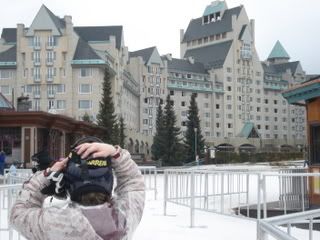


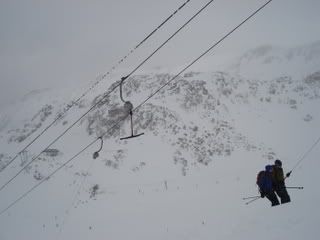






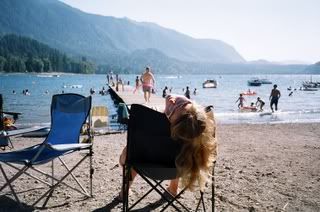



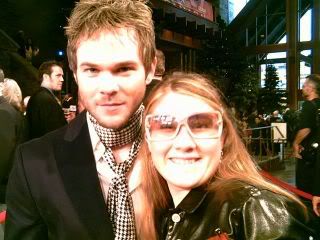

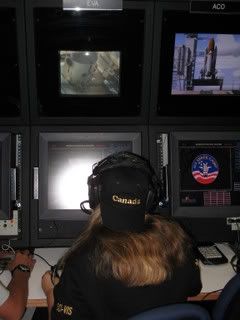

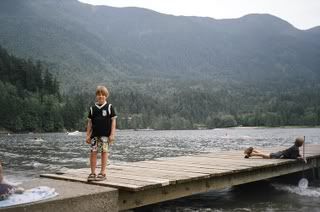
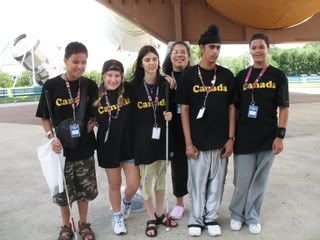


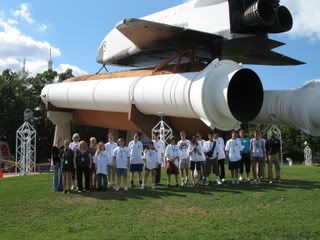
No comments:
Post a Comment